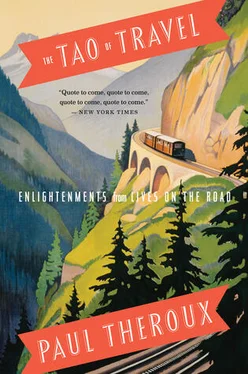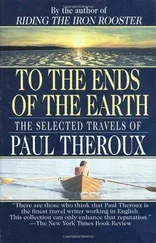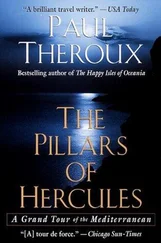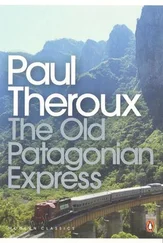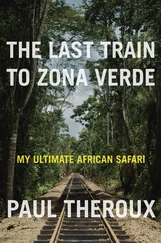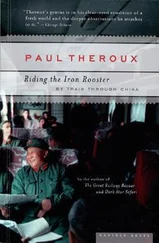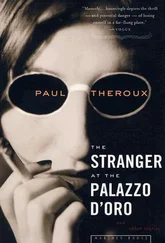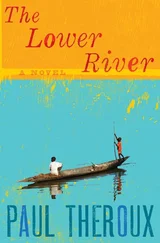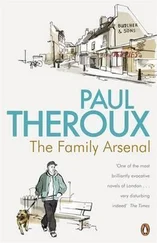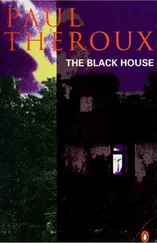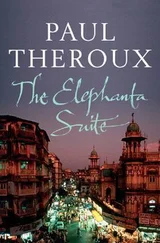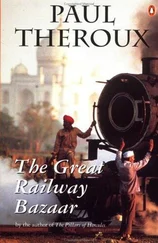Eric Newby and Wanda
IN A Short Walk in the Hindu Kush, Newby traveled with Hugh Carless. In Slowly Down the Ganges, The Big Red Train Ride, and Through Ireland in Low Gear, he took his wife, Wanda, and in these three books he continually describes her expostulating in her Slovenian accent, "Horrick, vye you are saying zat to me?" But he is often funny and has a sharp eye for detail.
Rudyard Kipling and Carrie
WIDELY TRAVELED, NEVER alone. Known for his jingoism and his bombast, Kipling was, in fact, an enigmatic and melancholy figure. He was marked by his lonely childhood, spent in a cruel household ("the House of Desolation," he called it) in England, away from his parents in India (from the ages of five to eleven; see his story "Baa, Baa, Black Sheep"). He never mentions his wife, Carrie, who was American, a Vermonter, but she was always at his side. Much of his work is based on travel, especially in India, South Africa, and the United States, and his book of travel pieces, From Sea to Sea (1899), is superb.
Graham Greene and Companions
BEGINNING WITH HIS first travel book, Journey Without Maps, his long walk through the hinterland of Liberia, which he took (leaving his wife and children at home) with his cousin Barbara, Greene always had a traveling companion or a driver or a lover on board. He could not cook, drive a car, or use a typewriter, so he was helpless alone. Greene seemed to require the mateyness of another person — his friend Michael Meyer, who traveled with him through the Pacific, or later in his life the priest Father Duran, who appears in Monsignor Quixote. Greene claimed to be manic depressive, sometimes suicidal, and lonely. He had numerous love affairs, many of them passionate. He remained married to the same woman, Vivien Greene, the whole of his life, but never went anywhere with her.
D. H. Lawrence and Frieda
LAWRENCE ALWAYS TRAVELED with his wife, Frieda von Richthofen (her cousin was the Red Baron), beginning with their elopement in 1912, two months after they met (she was then married to Ernest Weekly, a French professor). Although they quarreled constantly, they lived in and traveled through Italy, the United States, Mexico, and Australia — and he wrote books based on his travels in all these places, notably Mornings in Mexico and Sea and Sardinia, sometimes mentioning Frieda, usually not.
Somerset Maugham and Lover
ON HIS LONGEST trips — to China, which yielded On a Chinese Screen, and to Southeast Asia, which resulted in The Gentleman in the Parlour — Maugham traveled with his lover, Gerald Haxton, though he does not disclose the fact, largely because he was married to Syrie, who resented his two-timing her with this young American drunkard, and because at the time he was traveling, the 1920s and 1930s, homosexuality was a crime in Britain. But Maugham had a terrible stammer, and he needed someone to converse with locals and bring back colorful stories and dialogue for his books. "Master Hacky" was just the man to help. Also Maugham loved him deeply. After Haxton died, Maugham traveled with Alan Searle, a greedy young Londoner who had sent him fan letters and became his lover and literary executor.
Rebecca West and Henry
PROBABLY NO TRAVEL book is fuller of the expressions "My husband said…" or "My husband told me…" than Black Lamb and Gray Falcon (1941), Rebecca West's account of her various trips through Yugoslavia, and since it is a book of some 1,200 pages, the words "my husband" appear numerous times. He was a banker, named Henry Andrews, and full of theories and explanations, which she approvingly recounts in the book.
John Steinbeck and Elaine
STEINBECK TRAVELED WITH his dog in Travels with Charley, as he said, but (though he never mentioned them) he had many conjugal visits en route: his wife, Elaine, met him every few weeks on the road to cheer him up. We know this from the letters that were published after his death; for example, on October 10, 1960: "I'm glad you came out and it was a good time, wasn't it? It took the blankness off a lot" (Life in Letters). This "blankness" he speaks of is never disclosed in the jolly book.
Patrick Leigh-Fermor and Friends
AS A YOUNG man he traveled alone, walking across Europe from Holland to Turkey in 1933, a trip he described many years later in two books, A Time of Gifts (1977) and Between the Woods and the Water (1986). He is justly famous for having written one of the most evocative books about the Caribbean, The Traveler's Tree (1950) (see Chapter 23, "Classics of a Sense of Place"). He makes no bones about traveling in a group, and in fact has a felicitous way of describing this: "My companions, from beginning to end, were two friends: Joan, who's English, and Costa, who is Greek. Both of them, whittled now to shadows, are constantly present in the following pages."
Edward Abbey and Family
A GREAT HERO of loners and wanderers, high-plains drifters and monkey-wrenchers (eco-saboteurs), Abbey, a contradictory soul, craved the company of others, usually fellow boozers. But he had a way of pretending to have been solitary, being selective in the retelling of his experiences. In Desert Solitaire, where he celebrates solitude and his lonely communing with nature in southern Utah, he does not mention that for one five-month period he was living in a trailer with his third wife, Rita, and young son. Whole chapters of the book, such as "The Moon-Eyed Horse," "very likely never happened at all," his biographer, James Cahalan, wrote.
Wilfred Thesiger and Friends
OFTEN THOUGHT OF as the solitary nomad of the Empty Quarter, Thesiger could not bear to be alone. In his Wilfred Thesiger: The Life of the Great Explorer, Alexander Maitland writes, "As for Thesiger's pursuit of 'the peace that comes with solitude,' by his own admission he found solitude unbearable. His friend John Verney [a painter] described him as someone who 'hates being left alone for more than a minute. He may travel in remote parts of the world, but always accompanied by a crowd of tribesmen, porters or whatever and has probably spent fewer hours in total solitude than, like most painters, I'm accustomed to spend in a week. By solitude, Thesiger appears to have meant something like the 'clean' space of desert undefiled by modern communications or modern transport, and the harmonious traditional life he found among the tribes who lived there." In later life Thesiger lived with an African family in northern Kenya. They demanded money, cars, and radios, and he paid up, not minding that he was being fleeced as long as they kept him company.
Jean Cocteau, Passepartout, and Charlie Chaplin
PART STUNT, PART challenge by Paris-Soir, but primarily a literary opportunity, Cocteau (1889–1963) claimed that he could travel at least as well as Phileas Fogg and make it around the world in eighty days. He set off in March 1946, accompanied by his lover and part-time secretary Marcel Khill, whom he called Passepartout in the book Mon Premier Voyage (1937). He had met Khill in 1932, when Cocteau was forty-three and Khill twenty (though he looked fifteen, Cocteau said). The book was translated as My Journey Round the World. In an introduction to a new edition, the actor and writer Simon Callow wrote: "[Khill] and Cocteau met at the house of a Toulon naval officer… who had 'discovered' him working on a chain gang; he was dispensing opium, thus uniting in his person two of Cocteau's keenest appetites."
The book, a breathless diary, was dedicated to André Gide. In the course of traveling through Malaya, Cocteau puns in French on the name Kuala Lumpur, calling it "Kuala l'impure," but it is clear that he is too bored, fatigued, and preoccupied to care much about the places he is breezing through, mere glimpses of Egypt, India, Burma, Malaya, and Singapore, with slapdash diary entries.
Читать дальше
